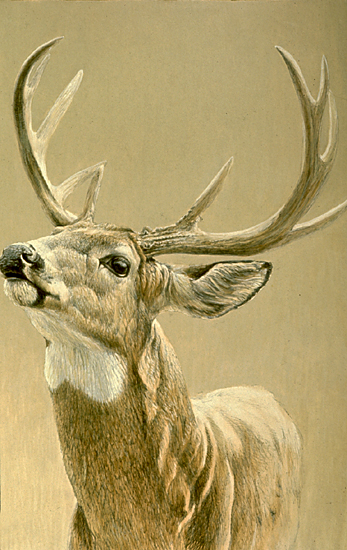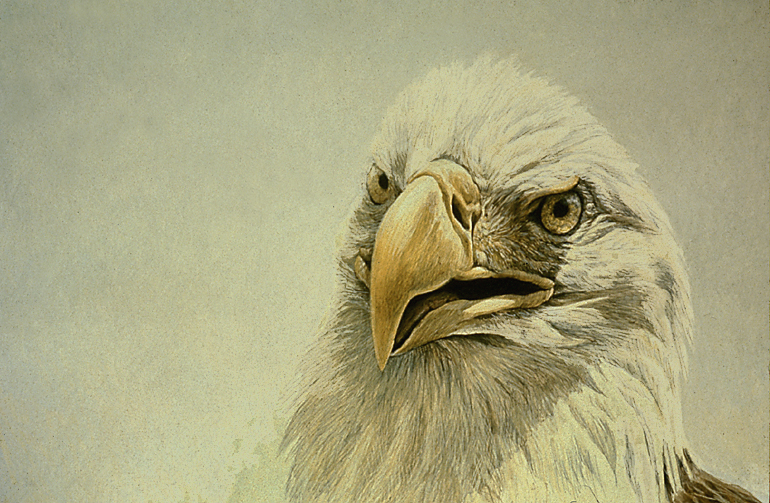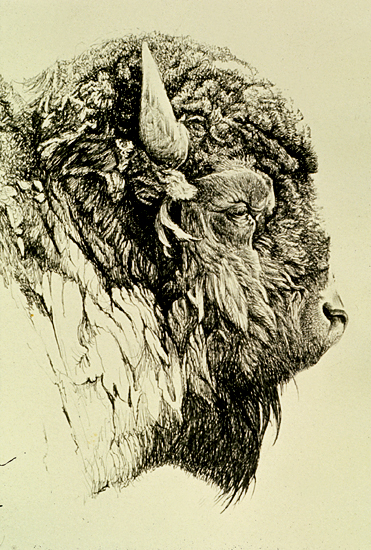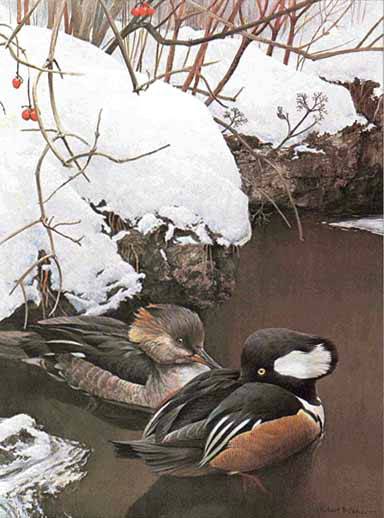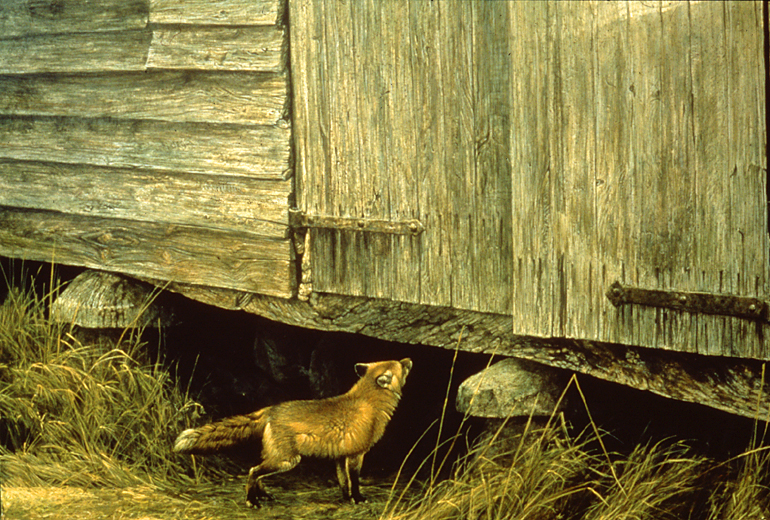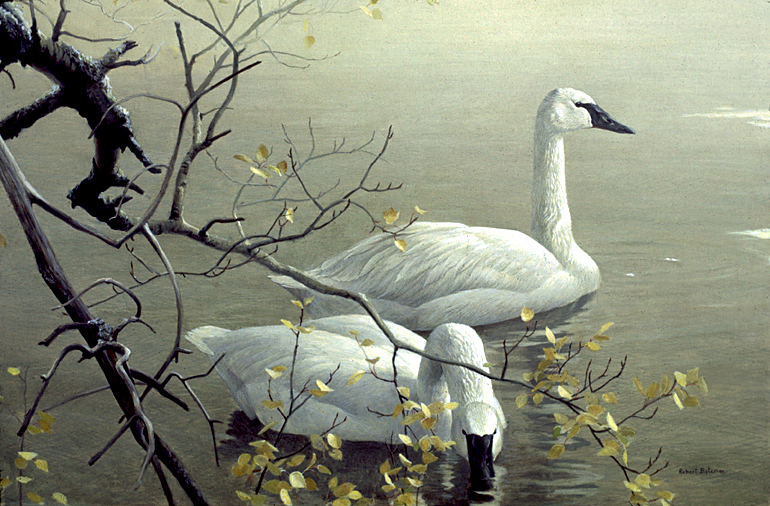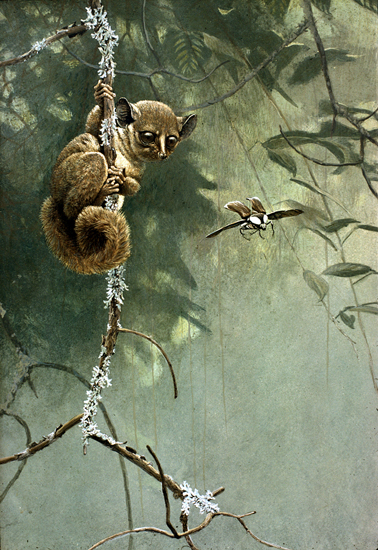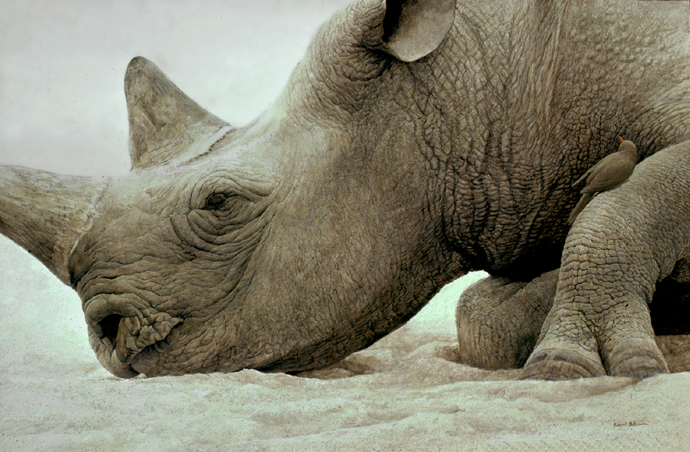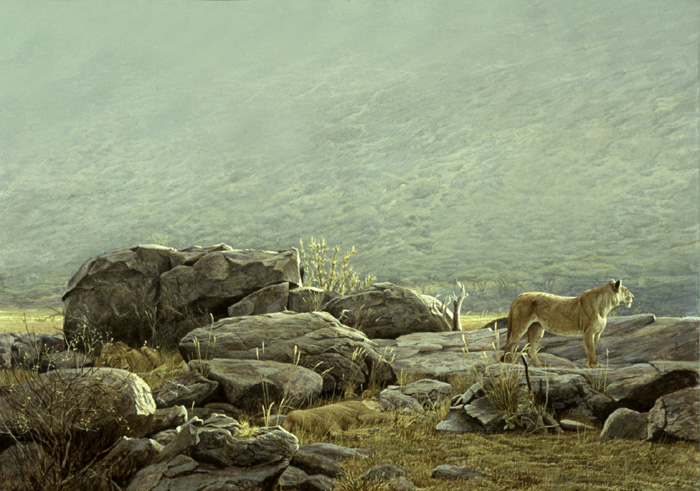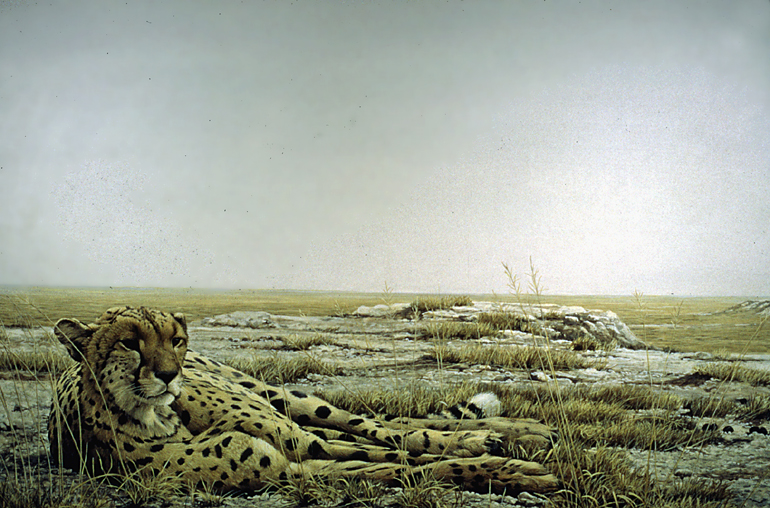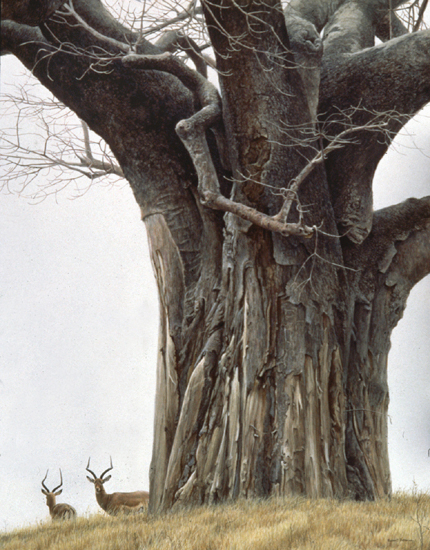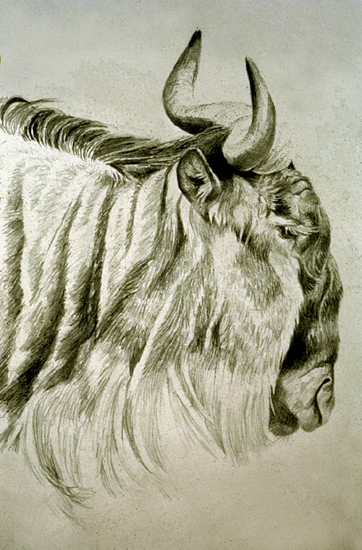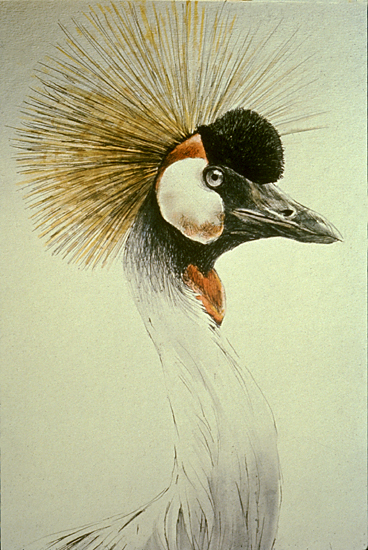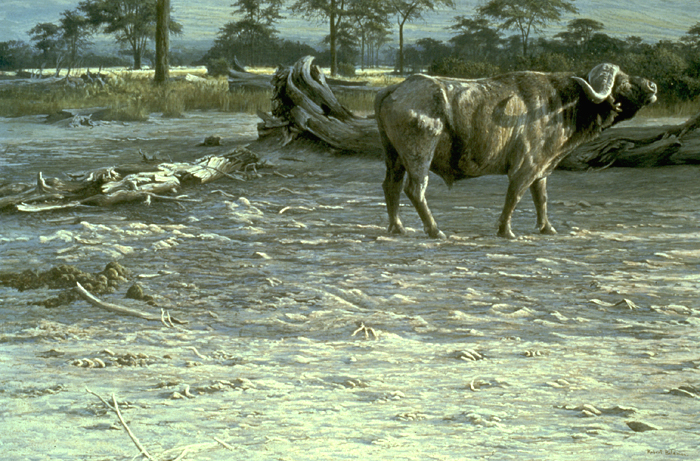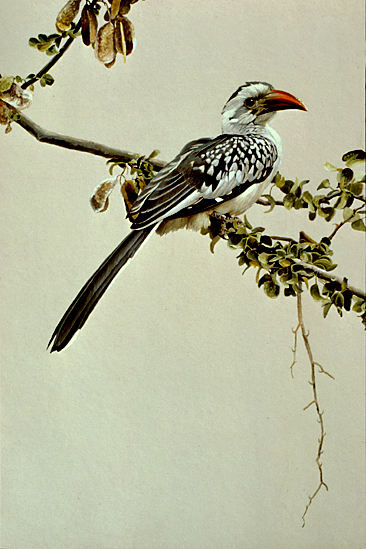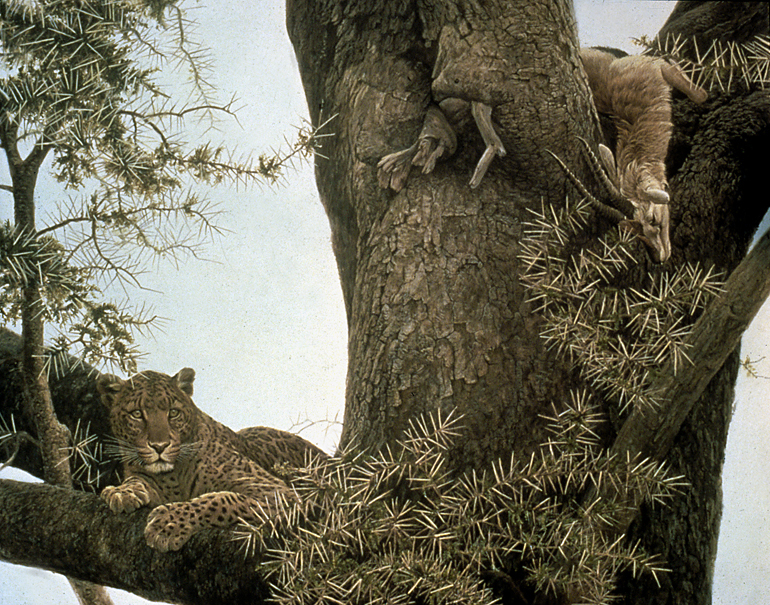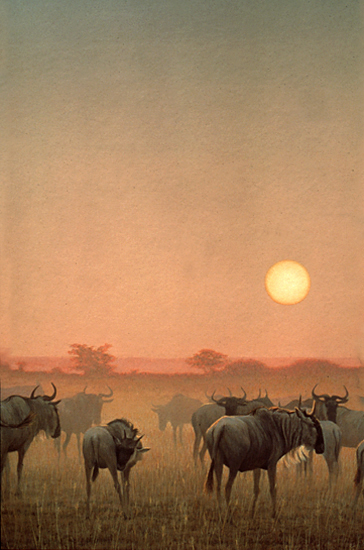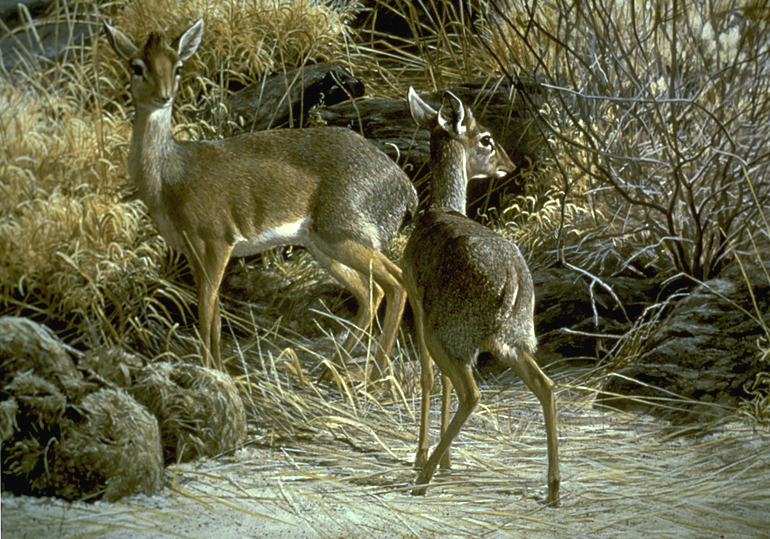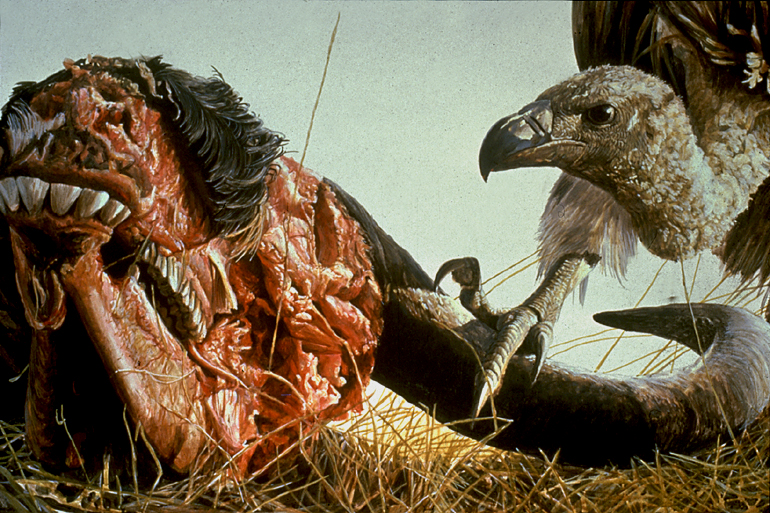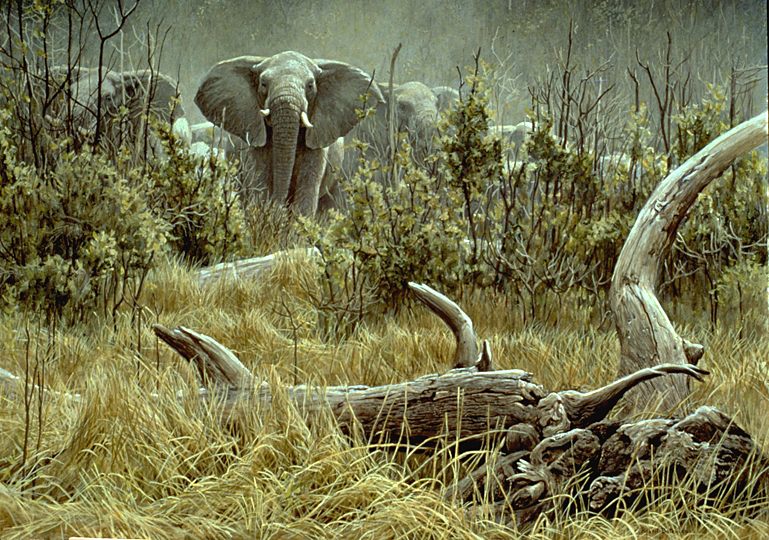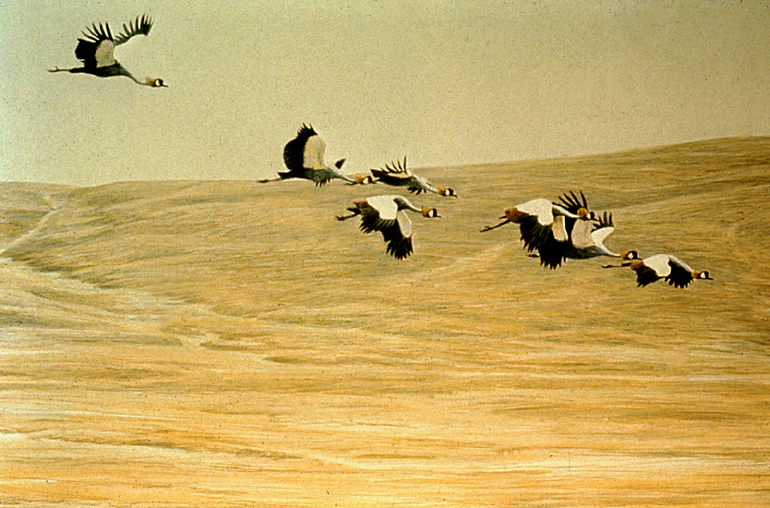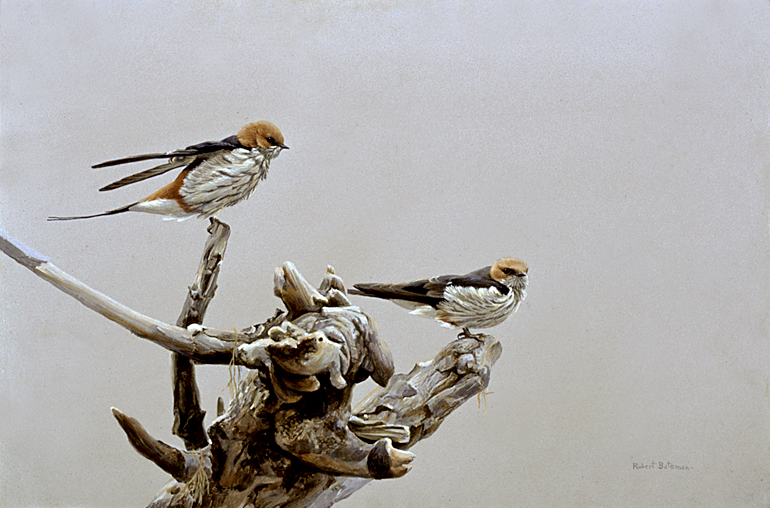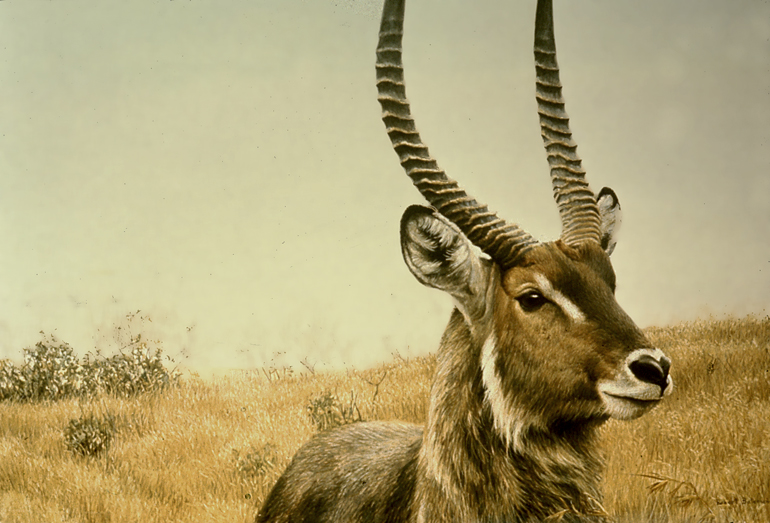نیرنگ خیال
لائبریرین
کچھ عرصہ قبل میں نے رابرٹ بیٹ مین کی ماسٹرز گیلری 2006 میں پیش کی گئی تصاویر پیش کی تھیں۔ آج آپ تمام احباب کے سامنے رابرٹ ہی کی London Tryon Gallery میں 1975 میں نمائش کے لیے پیش کی گئی تصاویر حاضر ہیں۔ یہ زیادہ تر آرٹ Wildlife سے متعلق ہے۔
جن تصاویر کی تفصیلات رابرٹ نے ساتھ مہیا کی ہیں۔ وہ بھی تصاویر کے ساتھ ہی شامل کر رہا ہوں۔
جن تصاویر کی تفصیلات رابرٹ نے ساتھ مہیا کی ہیں۔ وہ بھی تصاویر کے ساتھ ہی شامل کر رہا ہوں۔
Short-eared Owl
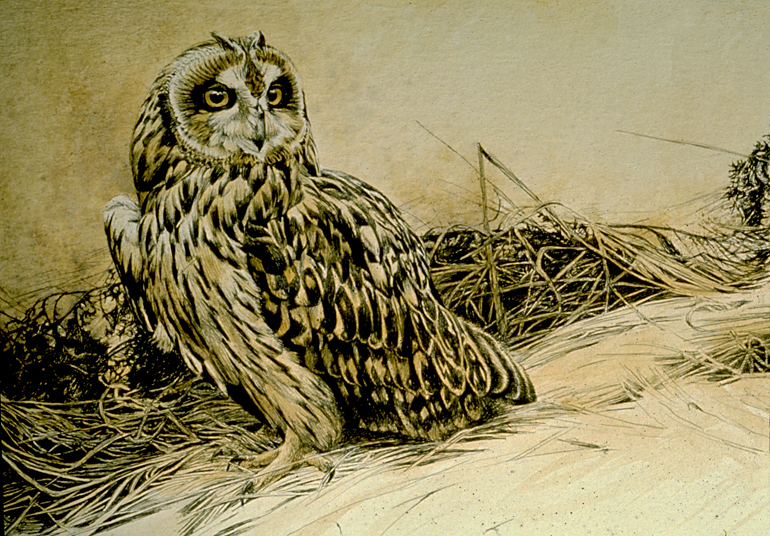
Polar Bears at Baffin Island
“Polar bears age generally loners. They seldom co-operate on the kill, and mated pairs are rarely seen together. The female, however, will spend a long time with her one or two cubs, giving them lessons of the hunt. Sometimes the young bear can be almost as big as its mother before it goes out on its own.
“In this painting, I have been gazing into the landscape which is the direction I want the viewer to gaze. Three-dimensional form is important in all of my paintings, but I especially enjoyed playing with it in this one. I would like the viewer to be carried back across the pack ice, past the sea mist and up the rugged valley. As we move up the valley, we explore waterfalls, cliffs and concave and convex slopes.
“Finally, we reach the top and the permanent ice cap, which has formed into a massive, simple sculpture.”
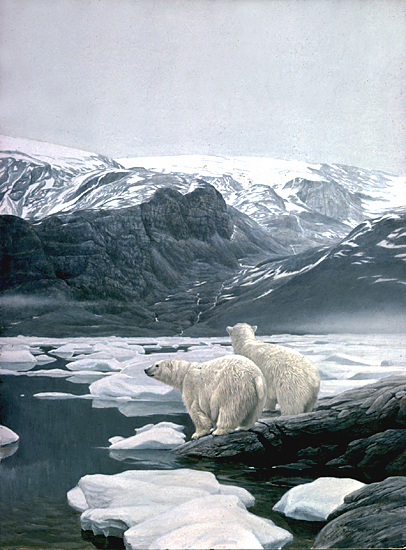

Polar Bears at Baffin Island
“Polar bears age generally loners. They seldom co-operate on the kill, and mated pairs are rarely seen together. The female, however, will spend a long time with her one or two cubs, giving them lessons of the hunt. Sometimes the young bear can be almost as big as its mother before it goes out on its own.
“In this painting, I have been gazing into the landscape which is the direction I want the viewer to gaze. Three-dimensional form is important in all of my paintings, but I especially enjoyed playing with it in this one. I would like the viewer to be carried back across the pack ice, past the sea mist and up the rugged valley. As we move up the valley, we explore waterfalls, cliffs and concave and convex slopes.
“Finally, we reach the top and the permanent ice cap, which has formed into a massive, simple sculpture.”

آخری تدوین:

